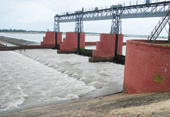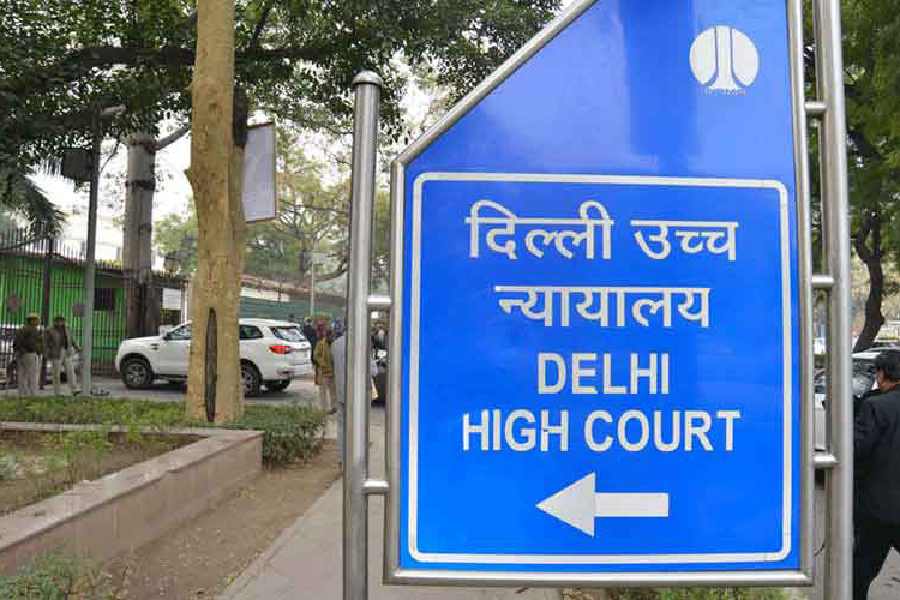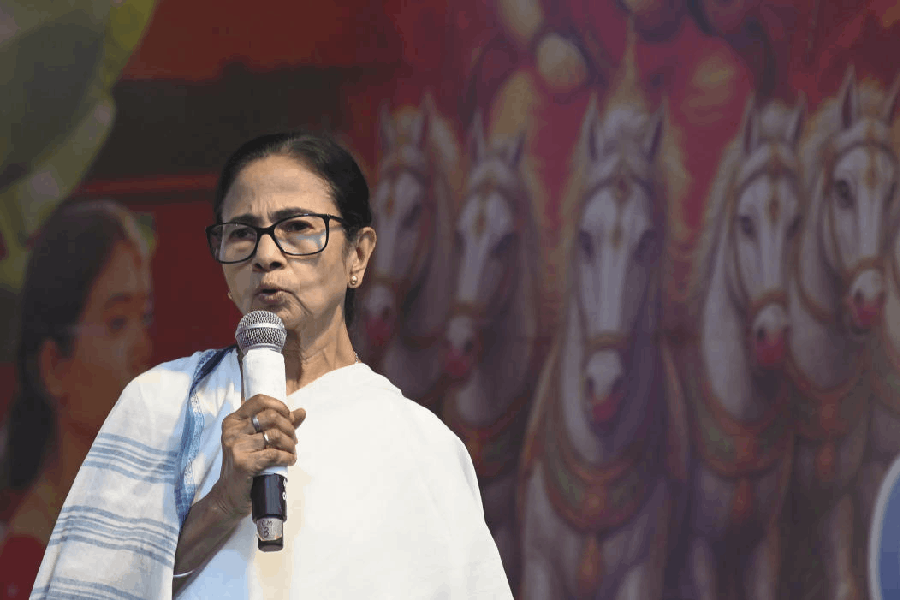 |
With the mercury soaring in Calcutta, Paro and Thimpu in Bhutan offer a perfect summer vacation. It takes around nine hours to reach Paro from Phuentsholing — a border town in Bhutan — by road. Phuentsholing and Jaigaon, two towns on either side of the India-Bhutan border, are a study in contrast. India’s Jaigaon is dusty, dirty and unplanned while Bhutans’ Phuentsholing is sparkling clean and well-planned.
On the way to Chuzom — the confluence of Paro Chu (river) and Thimpu Chu — where the road bifurcates and one leads towards Paro, we had a hearty lunch of chhole bhature at Dantak canteen, run by the Border Road Organisation. The organisation is located near Chukha, where Bhutan has built a hydroelectric project, over Thimpu Chu with India’s help.
We reached Paro after nightfall and were exhausted. We checked into our hotel.
The lush green Paro valley is spread out on both banks of the Paro river and is surrounded by green hills. We wanted to simply relax in the hotel balcony, enjoying the green vista of the valley in front of us.
But there was so much to see — the Ha valley, the Paro Dzong (fort), the Kyichu and Dungtse Lhakhang (monastery), Ta Dzong and the Taktsang Lhakhang.
Ha valley is situated on the border with China, 61 kms from Paro. It is rarely visited by outsiders. One can climb to Chele La (mountain pass) at a height of 3,988 metres, the highest point on Bhutans’ road. Ha, a small hill town with a fort, is situated at a steep drop. The town has retained the old Bhutanese style of architecture.
To know Bhutan in all its complexity, a visit to the museum at Ta Dzong is a must.
Taktsang, the most sacred monastery of Bhutan, is located at 2,950 metres. One has to go up 3,000ft by car from Jagathang valley and then climb 700 stairs to reach the monastery or take a pony. The monastery is an engineering marvel and was constructed in 1692 by Tenzing Ragbe. It hangs high on a cliff above Paro valley and is called the “tiger’s den”.
Paro Dzong or Rinchenpong Dzong (meaning fortress on a heap of jewel) was constructed by Shabdrung Ngawang Namgyal in 1646 and became one of Bhutans’ strongest and most important fortresses.
After exploring Paro for three days we headed for Thimpu.
Surrounded by green hills, the Bhutanese capital is fast becoming a concrete jungle. But an attempt to retain the old architectural style can be noticed. Thimpu Chu flows quietly, dividing the valley in two.
We started with the National Memorial Chorten (stupa) and proceeded to Changangkha Lhakhang, a craft centre and the folk heritage museum.
After a quick lunch, we set off to Pangri Jampa, Dechenphu Lhakhang and the telecom tower — to get a bird’s eye view of the valley — and finally to Thimpu Dzong.
Only Bhutanese nationals are allowed inside Pangri Jampa and Dechenphu Lhakhang.
Constructed by the queen mother of third king Jigme Dorzi Wanchuk in 1974, the huge National Memorial Chorten in the backdrop of a turquoise blue sky was striking.
Trashichhoe Dzong is beautiful too. The fortress, constructed in 1216, was rebuilt in 1630 by Shabdrung Ngawang Namgyal and later repaired and christened by the Namgyal in 1641. It later became the summer residence of Namgyal and Je Khempo (the religious heads of Bhutan).
Paro and Thimpu can be visited round the year, but the best time to visit is October-November and March-April. The rainy season should be ideally avoided.
The Paro and Thimpu festivals (called Tsechu) are held in March-April and September-October respectively.
Our visit to Bhutan, with its unique and well-preserved culture and architecture, was a treasured experience.
 |
Going
Entry points are Phuentsholing and Paro. Buses and cars are available from Siliguri to Jaigaon and flights from Calcutta to Paro. Indians need a permit to enter Bhutan, available at Phuentsholing and Paro on production of a photo-identity card. Separate permission is needed to enter the forts and some monasteries like the Taktsang Lhakhang, which is given by the cultural department of Bhutan at Thimpu.
Buses ply inside Bhutan. Car can also be hired from Phuentsholing or Paro for travelling within Bhutan.
Staying
Hotels of various tariff are available. Food is costly. Indian fare is available. Suza (butter tea), Faksa (Ham) and Sakam (beef) are recommended. Contact: Sacred Himalaya Travel in Thimpu. e-mail: tshetem@sacredhimalayatravel.com










